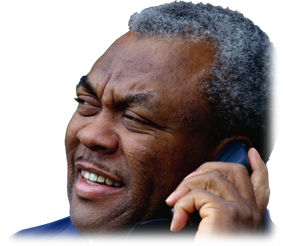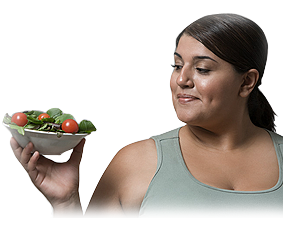Weight Loss SmartSiteTM | ||||||||||||||||||
Diet after gastric bandingDescriptionYou had laparoscopic gastric banding. This surgery made your stomach smaller by closing off part of your upper stomach with an adjustable band. After surgery you will eat less food. You also will not be able to eat quickly. Your doctor, nurse, or dietitian will teach you about foods you can eat and foods you should avoid. It is very important to follow these diet guidelines. When you go home from the hospitalYou will eat only liquid or puréed food for 2 to 3 weeks after your surgery. You will slowly add in soft foods, and then regular foods. When you start eating solid foods again, you may feel full very quickly. Just a few bites of solid food may fill you up. This is because your new stomach pouch holds only a small amount of food. It also depends on whether your surgeon placed some fluid in the band at the time of surgery. If so, you may feel full quickly. Some surgeons wait for several weeks before starting the filling process, and food may go down much more normally until that happens. Your pouch might get larger over time. You do not want to stretch it out, so DO NOT eat more than your doctor, nurse, or dietitian advises. When your pouch is larger, it will not hold more than about 1 cup (150 g) of chewed food. A normal stomach can hold up to 4 cups (600 g) of chewed food. You will lose weight more slowly than with a gastric bypass or a sleeve gastrectomy. It depends in part on the number of band fills you have and how tight the band has been adjusted. It also depends greatly on your exercise and your eating as the dietitian recommends. During this time, you may have these symptoms:
These symptoms are normal. They should go away as your body gets used to your weight loss. A new way of eatingRemember to eat slowly and chew each bite very slowly and completely. DO NOT swallow food until it is smooth. The opening between your new stomach pouch and the large part of the stomach is small. Food that is not chewed well can block this opening.
Some foods you eat may cause some pain or discomfort if you do not chew them completely. Some of these are pasta, rice, bread, raw vegetables, and meats. Adding a low-fat sauce or gravy can make them easier to digest. Other foods that may cause discomfort are dry foods, such as popcorn and nuts, or fibrous foods, such as celery and corn. You will need to drink up to 8 cups (64 ounces) of water or other calorie-free liquids every day:
Follow your diet carefullyYou will need to make sure you are getting enough protein, vitamins, and minerals while you are losing weight quickly. Eating mostly protein, fruits, vegetables, and whole grains will help your body get the nutrients it needs. Protein may be the most important of these foods. Your body needs protein to build muscles and other body tissues. Low-fat protein choices include:
Combining foods with texture together with protein helps people with a gastric band stay satisfied longer. This would include things like salad with grilled chicken, or celery with peanut butter. Because you are eating less, your body may not be getting enough of some important vitamins and minerals. Your provider may prescribe these:
You will need to have regular checkups with your provider to keep track of your weight and to make sure you are eating well. These visits are a good time to talk with your provider about any problems you are having with your diet, or about other issues related to your surgery and recovery. Calories still count!Avoid high calorie foods. It is important to get as many nutrients as you can without eating too many calories. One way to do that is to read food labels.
If you gain weight or your weight loss is slower than expected, ask yourself:
| ||||||||||||||||||
| ||||||||||||||||||
Review Date: 1/30/2018 Reviewed By: John E. Meilahn, MD, Bariatric Surgery, Chestnut Hill Surgical Associates, Philadelphia, PA. Review provided by VeriMed Healthcare Network. Also reviewed by David Zieve, MD, MHA, Medical Director, Brenda Conaway, Editorial Director, and the A.D.A.M. Editorial team. View References:  The information provided herein should not be used during any medical emergency or for the diagnosis or treatment of any medical condition. A licensed medical professional should be consulted for diagnosis and treatment of any and all medical conditions. Links to other sites are provided for information only -- they do not constitute endorsements of those other sites. No warranty of any kind, either expressed or implied, is made as to the accuracy, reliability, timeliness, or correctness of any translations made by a third-party service of the information provided herein into any other language. © 1997- A.D.A.M., a business unit of Ebix, Inc. Any duplication or distribution of the information contained herein is strictly prohibited. | ||||||||||||||||||
| ||||||||||||||||||













